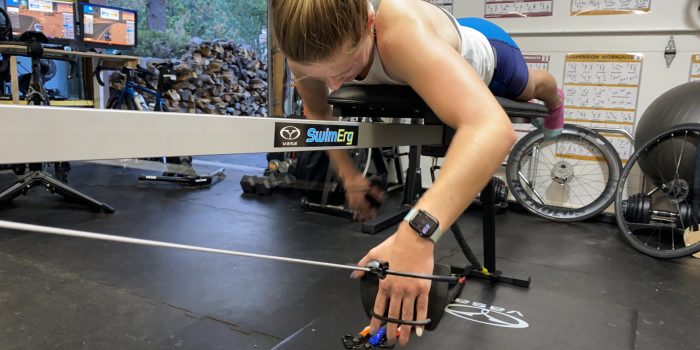Endurance athletes often face the misconception that base training revolves solely around long, slow distance (LSD) sessions. However, this narrow view fails to capture the complexity and diversity of base training, which is essential for building anaerobic function and overall endurance performance. In this article, we’ll delve deeper into the concept of base training, exploring its physiological underpinnings and debunking common myths. Additionally, we’ll discuss alternative training models like pyramidal and polarized training and emphasize the importance of periodization in long-term training progression. By broadening our understanding of base training and adopting more effective training strategies, athletes can optimize their performance and achieve their goals more efficiently.

Understanding Base Training:
Base training is the foundation upon which endurance athletes build their fitness and performance capabilities. Contrary to popular belief, it’s not limited to LSD sessions but encompasses a range of training intensities and modalities aimed at enhancing aerobic capacity. While low-intensity, long-duration workouts in zones 1 and 2 are indeed part of base training, it’s equally important to incorporate elements of sweet spot training (Tempo), (zones 3 and 4) and anaerobic workloads at zones 5 and 6 or above lactate threshold (LT2).
Physiological Adaptations in Base Training:
- Increased Mitochondrial Density: Base training boosts mitochondrial numbers within muscle fibers, enhancing aerobic energy production and delaying fatigue.
- Improved Capillary Density: Base training stimulates the formation of new capillaries in muscles, facilitating better oxygen delivery and utilization during exercise, thereby improving endurance performance.
- Enhanced Oxygen Delivery: Through base training, athletes experience improvements in cardiac output, blood volume, and flow regulation, resulting in enhanced oxygen delivery to muscles, which in turn delays fatigue and improves endurance capacity.
- Optimized Fat Utilization: Base training enhances the body’s ability to utilize fat as a fuel source, sparing glycogen stores and extending endurance capacity during prolonged exercise.
Base training targets diverse energy systems and metabolic pathways, leading to crucial physiological adaptations that enable athletes to sustain prolonged efforts, delay fatigue, and enhance overall endurance performance.

Pyramidal and Polarized Training Models:
Pyramidal and polarized training models offer alternative approaches to traditional LSD training, providing athletes with more structured and effective training regimens. In pyramidal training, the majority of training volume (approximately 75%) is dedicated to base training, with smaller portions allocated to sweet spot training (15-20%) and anaerobic workload (5-10%). This balanced approach ensures comprehensive development across different intensity zones.
On the other hand, a polarized training model emphasizes low-intensity training for the majority of workouts (85-95%), with a smaller proportion dedicated to high-intensity efforts (5-15%). This approach capitalizes on the principle of training distribution, where the majority of training volume occurs at either very low or very high intensities, with minimal time spent in the moderate intensity zone.
Balancing Volume, Intensity, and Recovery:
Achieving the right balance between volume, intensity, and recovery is essential for maximizing training effectiveness and minimizing the risk of overtraining or injury. This balance is determined by monitoring an athlete’s performance gains across different energy systems and fatigue metrics. Additionally, factors such as an athlete’s natural physiological type and genetic predispositions play a significant role in shaping their training plan.
Periodization and Long-Term Progression:
Periodization is a key concept in long-term training progression, ensuring that athletes receive the appropriate stimulus to stimulate adaptation while avoiding excessive fatigue or injury. By dividing the training year into distinct phases (e.g., base, strength, strength endurance, speed endurance, race specifics and taper), periodization allows athletes to systematically progress through different training intensities and volumes, optimizing their readiness for competition.

Monitoring and Adjusting Training:
To monitor and adjust training intensity and volume effectively, athletes can utilize wearable technology and data-driven insights. Devices such as FORM smart goggles, smartwatches, and power meters provide real-time feedback on training metrics, enabling athletes to make informed decisions about their training. By analyzing performance data and listening to their bodies, athletes can fine-tune their training plans to align with their individual responses and performance goals.
Conclusion:
In conclusion, base training is a multifaceted aspect of endurance sports that extends beyond traditional LSD sessions. By incorporating diverse training intensities and modalities, athletes can maximize their physiological adaptations and improve their overall performance capabilities. Alternative training models like pyramidal and polarized training offer structured approaches to base training, while periodization ensures long-term progression and readiness for competition. By leveraging technology and data-driven insights, athletes can monitor and adjust their training effectively, optimizing their chances of success in endurance sports. Ultimately, a comprehensive approach to base training is essential for achieving peak performance and reaching new heights in endurance sports.
by Justin Trolle
USA Triathlon Level 3 Coach

